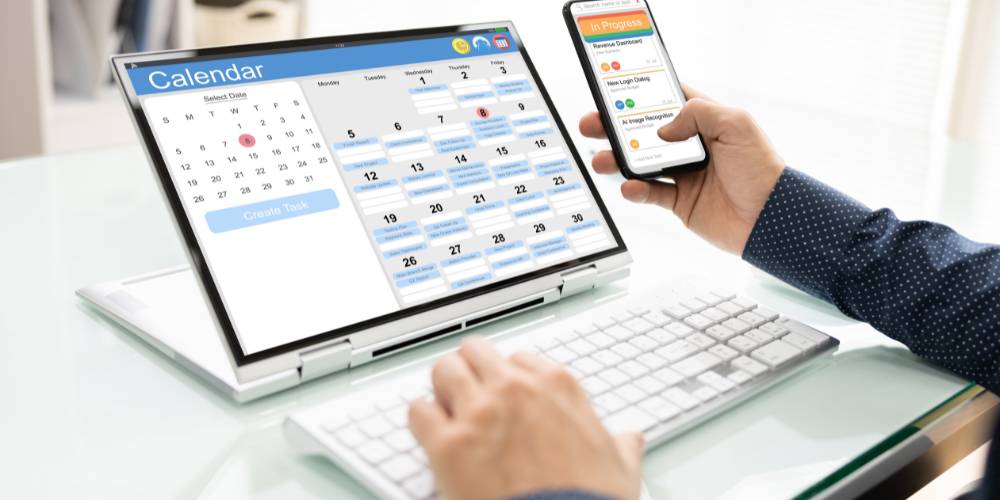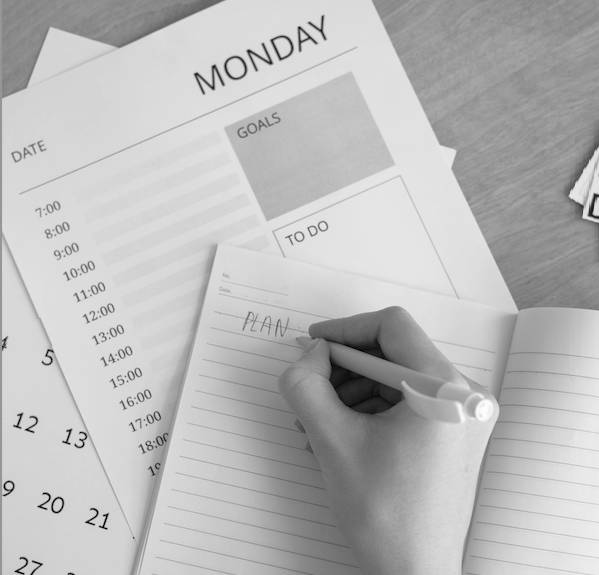

It’s the beginning of a new year, and around this time, many people begin to plan for the year ahead, with some setting obligatory goals they would potentially want to achieve before the festive season rolls around once again.
However, keeping New Year’s resolutions is often more complicated than one might think, and before the end of January, many people tend to forget their resolutions or even quit halfway through.
In fact, one study suggests that only around nine percent of American adults who make resolutions can complete them. What’s more, the research suggests that around 23 percent of people quit by the end of the first week of the new year, while the majority of 43 percent will quit by the end of January.
Setting new goals is part of the process of upskilling yourself or overcoming a difficult challenge you’ve been putting off for far too long. Nevertheless, having the proper mindset and a customizable digital calendar can help you track your progress and adjust as the year unfolds.
While sticking to new resolutions is perhaps one of the hardest things for many people, taking the time to plan and execute these goals properly will make them feel less like a chore and more like a personal victory.
Using a Digital Calendar for New Year’s Resolutions
One of the ways to turn your New Year’s resolutions into habits is to use a digital calendar. Using an online calendar that’s customizable and interactive, you can keep better track of your progress but make adjustments as you go along.
Plan Goals in Advance
Getting a head start on your year is one of the best ways to push your boundaries and further make necessary improvements where you see fit. While there might be multiple things you’d like to achieve this year, take the time to plan your resolutions in advance.
Instead of having to deal with everything head-on and all at once, planning your goals will ensure that you can keep track of your progress and have enough time to achieve everything you set out to do.
When planning, you can put bigger, more complicated tasks off until later in the year, such as participating in a marathon or even learning a new language. This will give you enough lead time to steadily master every part of learning something new.
For smaller tasks, whatever this may be, try to space them with several weeks or even a month in between, allowing yourself enough time to complete everything at a pace that works for you.
Have Flexibility
Part of the process of setting new resolutions is to achieve something bigger. While this helps to put your abilities to the challenge, there might be times you feel that you have taken on more responsibilities than you can handle.
Instead, begin to plan your resolutions around being more flexible. Focus on the things you can achieve within your capacity, instead of working tirelessly to complete something that will eventually never amount to anything.
If you begin to notice that you are falling behind on something, take some time to evaluate your priorities, and create a schedule that’s flexible and suits your lifestyle.
You might find yourself off to a strong start; however, this trend might not last forever, and you might begin to fall back into old routines and habits. When this occurs, begin to look at ways you can make slight improvements and evaluate what’s important and what doesn’t benefit you anymore.
Schedule Smaller Accomplishable Activities
Perhaps one of the biggest resolutions people set out for themselves at the beginning of the year is to get back into shape or even start exercising more often. While frequently exercising is important to your overall health, instead of jumping right into a stringent exercise program or diet, focus on ways you can schedule smaller activities that will contribute to the overarching goal.
If your goal is to save more money this year and minimize your debt, try to schedule budget-friendly activities, such as meal planning, eating out less during the week, or even cutting down on frequent trips to the grocery store.
Remember that as the year unfolds, you can steadily track your progress and see where you stand with certain goals. If you notice that you’ve managed to save some money and reduce your debt, you can either bring on board a new activity that will help you save and budget better or perhaps include some new things that will help keep you in line with your end goal.
Set up Reminders
One of the best things about using a digital calendar for your activity and personal time management is that you can set personal reminders to help keep you on track. Knowing how busy life can be, having a personal reminder will keep you encouraged to fulfill your goals and keep on track with what you set out to accomplish.
Your reminders can be adjusted to your personal needs. Let’s say for example that you’re planning to reduce your debt this year, however, you’ve lost track of how much you’ve saved, and your accounts payable. Using a reminder to track your progress each week or month will help you stay informed about how much you still have to pay off, or even how much you’ve saved.
Personal reminders can also be used to help keep you motivated. There will be times when you feel that all your efforts are not amounting to anything. However, having a small reminder every now and again to keep you in check will help motivate you to stay on track with your resolutions.
Document Your Progress and Achievements
Achieving new goals is often easier when you can document and visualize all the things you’ve already accomplished up until a certain point. Maybe you’re planning to travel more this year, or even get back into shape, however, not knowing how you will accomplish these goals or keeping track of your progress will often lead to you losing sight of the bigger picture.
Using your digital calendar, you can add any small achievement you’ve made by assigning it to a specific day or date. Create a list of things you would like to accomplish, and as you begin to achieve each, you can tick them off to have a clear visualization of how much you’ve managed to tackle until now.
More than this, there might be some goals you’re unable to achieve by the end of the year, however, having something to reflect on will help you realize the progress you’ve made throughout the year, and how much you’ve pushed your personal boundaries.
Acknowledging your small triumphs is one of the best feelings, and when the year comes to an end, and you’re able to reflect on everything, your digital calendar can act as a look back in time to show you just how much you’ve managed to accomplish during the year.
Final Thoughts
Setting new year’s resolutions is often a time to reflect on everything you’ve done in the year before and how you can make improvements that will ultimately benefit you in the long run.
Although it’s not always possible to achieve everything we’ve set out to do, keeping a digital diary or record of this will enable you to make improvements as time progresses, but more importantly, hold yourself accountable in times you might feel demotivated.
Getting a fresh start to the year is one of the best ways to push yourself, learn new skills, or simply kick old habits. Over time, as you realize that your resolutions become habits, you will steadily build yourself up to take on newer challenges, without overwhelming yourself.
Remember to be mindful of your goals, but also take the time you need to adjust to the change and create a schedule that works for your routine. The more you practice something, the better you become at it, and with a bit of patience and planning, you will be able to achieve those goals without much hindrance.











Carma Khatib
Carma Khatib is a passionate innovator and product manager with significant experience driving digital products from conception to launch. My mission is to find and create solutions to real-world problems that ultimately impact a company's triple bottom line: People, Planet, and Profit.